It’s just days since the announcement that The Junction, the much lauded and self-published graphic novel by Norm Konyu, has been picked up by Titan for publication in a new hardcover edition in 2022. A truly standout breakout work I said at the time that “bigger publishers should be looking at it with an eye to taking it to the far wider audience it deserves.” If you’ve already read it then you know that was an inevitability…
Konyu is also one of Broken Frontier’s 2021 ‘Six Small Press Creators to Watch‘ and today I chat with him about his background in animation, creating a labour of love like The Junction, and the trials and tribulations of launching a debut book during a pandemic…
ANDY OLIVER: Most Broken Frontier readers will no doubt know you from your universally acclaimed debut graphic novel The Junction but comics are just one part of your creative portfolio. Can you introduce yourself to start with and tell us a little about your wider background in animation and illustration?
NORM KONYU: Hey everyone. My name’s Norm Konyu. I was born and raised in Canada but have spent most of my adult life here in the UK working as a professional animator and illustrator, on projects ranging from feature films to commercials, TV series and most recently, apps, for clients like Cartoon Network, Nickelodeon, and the BBC. I used to dabble in comics (very poorly) when I was a teen, but hadn’t played with that particular medium for decades until The Junction.
AO: I called The Junction “an outstanding graphic novel, an essential book to acquire, and a remarkable debut from a truly skilled storyteller” when I reviewed it at BF last year and to be honest as effusive as that sounds it still feels like I undersold it. For those yet to read it how would you describe the basic premise of the book?
KONYU: As you know, it’s hard to say too much about the premise without spoilers, but I’ll give it a shot.
When 11-year-old Lucas Jones returns to his hometown after being missing for 12 years, jubilation is quickly replaced by unease and suspicion. He hasn’t aged a day in all those years. Lucas himself is silent and withdrawn, so it is down to a police detective and a child psychologist to try to puzzle out what has happened, with little more than the items from his backpack and a diary, a diary that refers to a place called ‘The Junction’.
AO: The Junction is such an intricately constructed book on every level. Given that, how long did you work on the book?
KONYU: Absolute ages. I wrote the first scribbled notes on some scrap paper way back in 2012! I spent a fair amount of time finding an individual style and worked on and off (mostly ‘off’ to be honest for several years) on the book but didn’t make great strides with it until the final couple of years. There were some false starts as well. No matter how carefully I’d thought I’d planned and scripted, once immersed in the artwork, flaws and better routes presented themselves, meaning the digital wastebasket was used on quite a few pages.
AO: Thinking about all those twists and turns of the The Junction – even its intriguing promotional blurb almost feels like clever misdirection given how the story develops – did the narrative evolve in any unforeseen ways as you worked on it?
KONYU: The Junction was written backwards. I started with the overall reveal, then had to work out a sequence of events that would result in that outcome. To confuse the writing/planning process even further, I then chopped those events into their constituent parts and re-ordered them out of sequence to preserve the mystery as long as possible. I wasn’t convinced it would make sense to anyone but myself, so I was pleased when the first few readers had absolutely no issue with my approach.
AO: The themes of love, loss, community and the importance of family are so powerful in the book and tackled with such sensitivity. In that regard what has reader reaction been like to The Junction? What has been some of the most pleasing feedback you have had?
KONYU: That I made some people cry? That sounds really horrible, but it meant I’d tapped into something. Beyond that, kind words about the look of the book were really welcome as I wasn’t sure how that would land with people as it’s not really a traditional comic style.
AO: Visually The Junction works so well because the combination of stripped back, angular characters placed on involved backgrounds give the reader a feeling of both the familiar and the eerie, ensuring our connection with the cast and yet retaining a disquieting feeling about the world they inhabit. Can you tell us about your artistic process and the mediums you worked in to bring the story to the page?
KONYU: Like most fellow comic creators, there’s no surprise that I start with the crudest of thumbnails for planning, before doing more detailed sketches, sometimes pencil on paper, sometimes straight in Illustrator with the paintbrush or pencil tool. The base artwork is then created over the top in illustrator in flat colours which gives the angular look you mention. Finally, using a library of scanned watercolour and acrylic paint textures, I lay those over the top of the illustrator artwork in Photoshop to achieve the final look.
AO: In what ways, if any, has your background in animation informed your approach to your comics practice?
KONYU: I suppose I approached the visuals as if storyboarding for television/film as that’s what I’m used to doing, obeying the rules of film editing. I did enjoy the fact that I was not constrained by the 16:9 ratio my animation work would normally work within.
AO: You originally self-published via Kickstarter. What were the particular challenges of that process and how did you approach the promotional aspects of crowdfunding?
KONYU: It was my first time crowdfunding so everything was new to me, but I think it was the time needed to keep on top of the campaign that surprised me. My personal advice for anyone considering doing it is, whatever amount of time you think you’ll need for the campaign, double it! Saying that, it was a great experience, and the only way at the time that I believed I could get the book out there. Promotionally (is that a word?), I mainly used the Holy Trinity of social media; Facebook, Instagram, and Twitter. I think Twitter had the best results, especially for people who didn’t know me before the campaign.
AO: Everyone’s probably tired of the inevitable pandemic question in interviews right now but in your case it’s particularly important to explore because you launched your first major comics work in the midst of these strangest of times. How have you adapted to the extra problems that has thrown up in terms of promoting the book and the lack of events?
KONYU: I think everyone’s tired of the pandemic, full stop!
I launched my campaign just before the first lockdown here in the UK but by the time it finished we were in full lockdown mode. I really had my doubts about how the campaign would fare as people grew worried about their jobs and were considering what to cut back on, but it did fine. The lack of events were more impactful. I made my first print run with extra copies for MCM London, LICAF, and Thought Bubble. And then they didn’t happen. So some of those boxes are still sitting here by my desk. I’ll be bringing the last remaining copies with me to this year’s LICAF and Thought Bubble ahead of the commercial print run next Spring as Titan have graciously allowed me to clear them.
AO: Now that The Junction has brought your comics work to an appreciative readership who are eagerly anticipating new Norm Konyu comics what can we look forward to from you next?
KONYU: I am working on a new book at the moment but I really have no idea when I’ll actually complete it. Don’t hold your breath, folks!
For more on Norm Konyu’s work follow him on Twitter here and on Instagram here. You can visit his site here and his online store here.
Interview by Andy Oliver





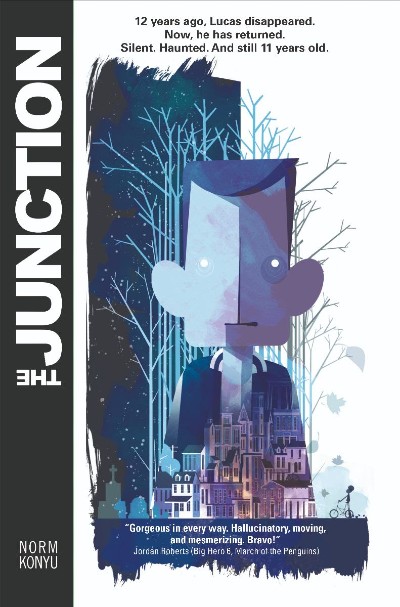
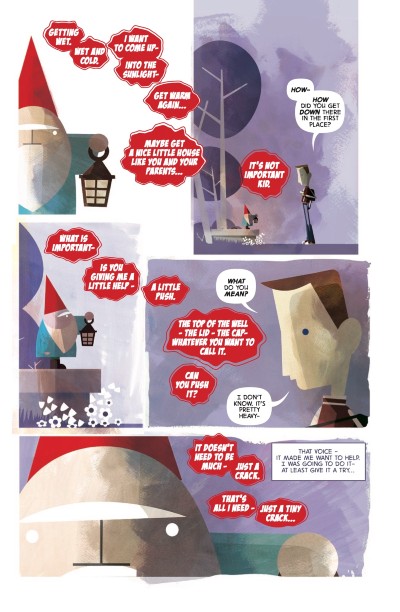
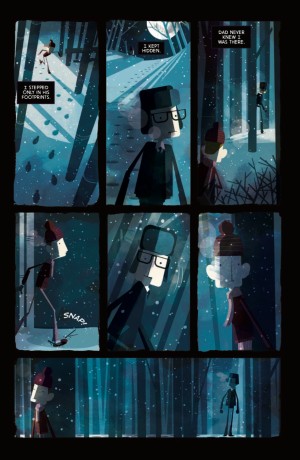
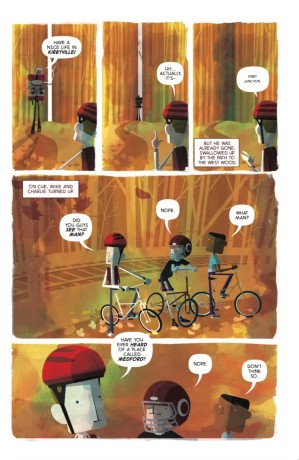
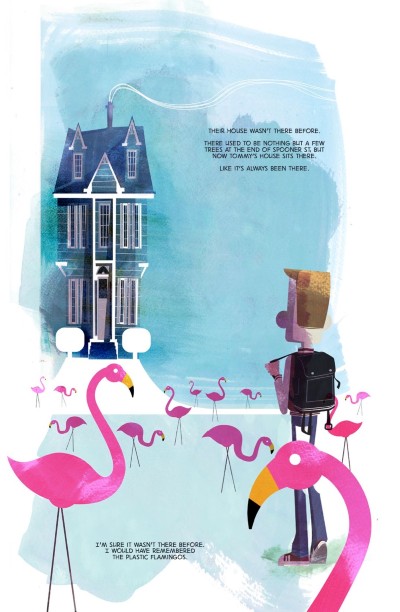
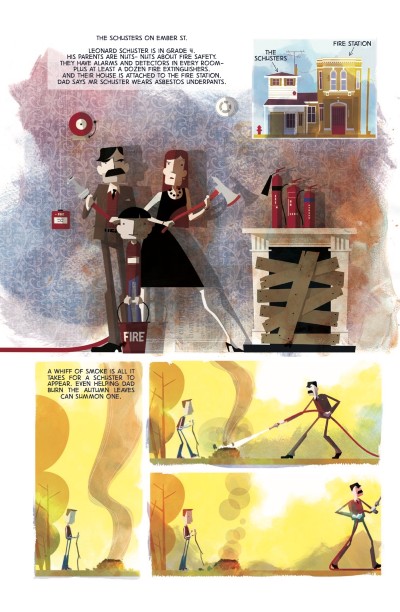
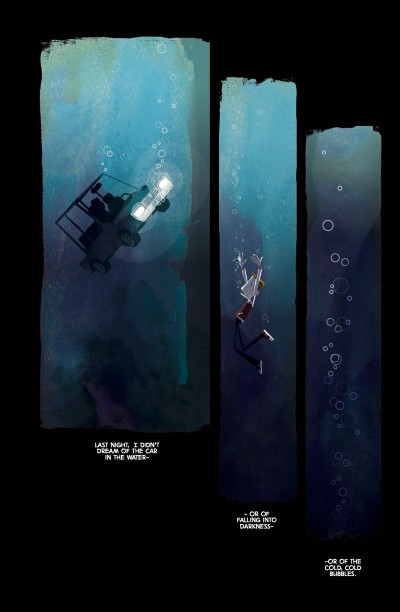


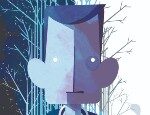
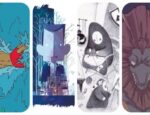
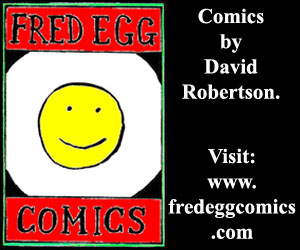





[…] Oliver chats with Norm Konyu about The Junction, writing a story backwards, layers of process, and crowdfunding advice for […]